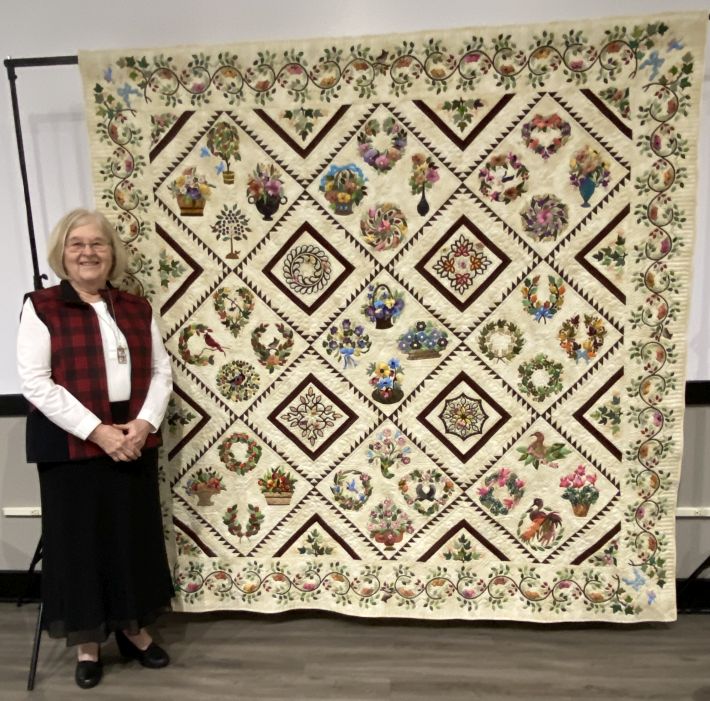When I'm teaching the featherweight maintenance classes, people ask me all the time, "what size needle do I need to buy for my Singer featherweight 221/222?" And, my answer is always, you need to use a standard 15 x 1 needle for your sweet machine. That's a regular sized needle, the kind you buy for all your modern sewing machines. There's nothing special to buy.
Well, nowadays there are so many different kinds of needles that it's hard to know what to use. There are needles to sew jeans or needles for using metallic threads. There are needles for knits and needles for leather. But, those are all 15 x 1 needles. Any of them can be used in the FW 221/222.
I've come to love the needles made by Schmetz. Those can be found in most any quilt shop or box store that would carry needles. And, there are a huge amount of different kinds for all sorts of sewing needs. The standard universal needle is fine. The larger the number the thicker the needle. And when you sew heavy fabric you need that thickness so your needle won't break so easily. Not too long ago I discovered a chart from Schmetz to tell me what size and kind of needle I had based on the color placed on the needle shaft. Here's the link to that chart. https://www.schmetzneedles.com/schmetz-color-code-chart/. So the needle here in my hand is purple on top so that means it's a microtex needle and the color below is kinda orange so the size is 80. That's a very standard size with a very sharp point. I like this needle a lot.
So what should you know about needles and your featherweight? Well, look at the top of the needle and you'll see there is a flat side. On all machines, vintage or modern, the thread always enters the eye of the needle from the side opposite that flat side. If you look closely, you'll also notice that there is a groove that runs down the shaft of the needle opposite the flat side as well.
You all know to place the needle in the needle clamp with the flat side to the left, right? Remember when I told you the throat plate is your reminder about placing the flat side of the needle to the left? The throat plate is straight (flat) on the left.
Well, it's sometimes hard to see when the flat side is exactly straight to the left. What if it is slightly turned to the front or to the back? Well, that's where you can sometimes have skipped stitches occur. So, if you get a skipped stitch and you've tried re-threading the machine to no avail, try moving the needle slightly to the right or slightly to the left to see it that helps eliminate that skipped stitch problem. And, of course, thread the needle from right to left.
It might be a good idea to think about getting one of those great needle threaders if you have problems threading the needle. There's a needle holder at the other end as well so you can hold the flat spot in place as you insert the needle into the needle clamp.
Okay, that's all I have for you today. Enjoy sewing with your sweet little featherweight and I'll get back to sewing the elephant quilt templates. I'll give more PP suggestions in the next post.








That is one comprehensive posts for any newcomer.
ReplyDeletesewing machine parts manufacturer
Thank you. I hope I covered everything about the needles.
ReplyDelete